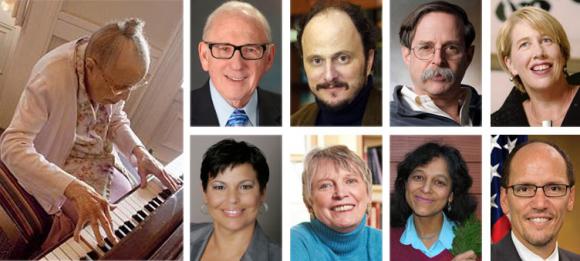PROVIDENCE, R.I. [Brown University] — At its 246th Commencement Sunday, May 25, 2014, Brown University will confer honorary doctorates on nine distinguished alumni:
- Lee Berk ’64, former president of Berklee College of Music and an advocate for broader community programs of musical education;
- Beatrice E. Coleman ’25, schoolteacher, church musician, and former secretary of the NAACP’s New England Regional Conference (awarded posthumously);
- Jeffrey Eugenides ’82, Pulitzer Prize-winning novelist and author;
- Arthur Horwich ’72, M.D.’75, physician, geneticist, and cellular biochemist;
- Mary Lou Jepsen ’87, Ph.D. ’97, electrical engineer and innovator of computer-driven graphic displays;
- Debra L. Lee ’76, chairman and CEO of BET Networks;
- Lois Lowry ’58, award-winning children’s author;
- Nalini Nadkarni ’76, forest ecologist and science communicator; and
- Thomas Perez ’83, civil rights attorney and U.S. secretary of labor.
The University chose to recognize Brown alumni with honorary degrees in celebration of the 250th anniversary of the University’s founding in 1764. None of the nine will be the Commencement speaker. Since its earliest days, Brown has reserved that honor for members of the graduating class. Commencement Weekend does offer other opportunities for public presentations, however. Berk, Horwich, Lowry, Jepsen, Eugenides, and Lee will present Commencement Forums on Saturday. Nadkarni will deliver the Baccalaureate address to the Class of 2014 on Saturday at 2:30 p.m. in the Meeting House of the First Baptist Church in America. (The Baccalaureate service will be simulcast for family and friends on large monitors in Sayles Hall, the Salomon Center, and on the College Green.)
Times and locations will be posted on the University’s Commencement website, which also offers the full roster of Commencement Forums and information on other Commencement Weekend events.
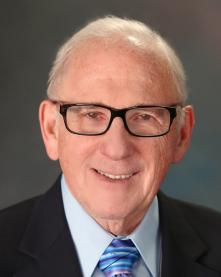
Lee Eliot Berk Music educator
Doctor of Humane Letters (L.H.D.)
Lee Berk received his Bachelor of Arts from Brown in 1964, the University’s bicentennial year, and continued his studies in law, earning his J.D. degree from the Boston University School of Law in 1967. He succeeded his father, Lawrence Berk, as president of Berklee College of Music in 1979 and continued in that position for the next 25 years, building what has become one of the world’s largest institutions for college-level music education.
From its inception in 1945, founded by Lawrence Berk as Schillinger House, Berklee has focused musical instruction on current musical styles. In 1945 that was jazz, and Berklee was the first institution to offer instruction in the new improvisational style. When rock arrived in the 1960’s, Berklee recognized guitar as a principal instrument. When Lee Berk became president, Berklee continued to recognize the musical currents: the first undergraduate degree in film scoring (1979); the first college major in synthesized music (1984); the first undergraduate degree in songwriting, with field trips to Nashville (1987); the Berklee International Network (1993); a major in music therapy (1996); a curriculum in hip-hop (1999); college-level music education online (2002); and professional majors in music production and engineering and in the business and management of music.
Berk has also been involved in music education for young people. He was a leader in establishing the Boston Arts Academy, Boston’s first high school for the visual and performing arts, and the Berklee City Music program, designed for talented but underserved urban teens. The national City Music program now provides year-round music education and college scholarships for underserved urban students from sixth to 12th grade. (City Music received the national 2008 Coming Up Taller Award from the President’s Committee on the Arts and Humanities.) Berk continued that interest after his retirement to the Southwest in 2004, where, among other efforts, he was a founding board member of the New Mexico School for the Arts, a new charter high school.
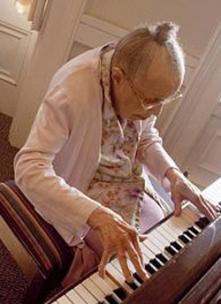
Beatrice E. Coleman Teacher
Doctor of Humane Letters (L.H.D.), awarded posthumously
Beatrice Coleman received her Bachelor of Arts from Brown in 1925, during the administration of President William H.P. Faunce. One of three black women in her class, she was a permanent member of the NAACP and secretary of its New England Regional Conference, was a civic leader as president of the Criterion Club, an African American women’s club, and an active committee member of the Rhode Island Association of Colored Women’s Clubs.
The granddaughter of slaves, Coleman grew up in Providence, reared by her mother, who worked for a local dressmaker, and by her grandparents, a watchman and practical nurse-midwife. She wanted to attend Howard University, where two of Rhode Island’s first black doctors had gone, but her family could not afford to send her so far away. So she remained in Providence and attended Brown, living at home because black students were not allowed to live in college dormitories then. She majored in Latin and history and joined the African American sorority Alpha Kappa Alpha. Brown and AKA became her lifelong passions.
Racial restrictions in Providence schools in 1925 compelled her to begin her teaching career in Pennsylvania and New Jersey. When Providence eliminated those restrictions, she returned home, where she directed a nursery school before joining the permanent staff of Emma Pendleton Bradley Hospital’s school department in 1961. In a hospital publication at the time, Coleman reflected that her teaching career stemmed from “my love for children, my tremendous interest in the mind, a chance for practical application of theories learned in college, and the many notes received from former patients.”
She was also a church organist and continued playing the piano at Tockwotten House, the Providence assisted living home where she spent her last years. Visitors understood that Bea Coleman would sit down at the piano and lead them in singing the Brown Alma Mater — and that any Brown graduates had better know the words. At her death in April, a little more than two weeks before her 110th birthday, Coleman was among the University’s oldest graduates.
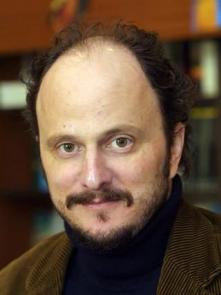
Jeffrey Eugenides Author
Doctor of Letters (Litt.D.)
Jeffrey Eugenides, a member of the Brown Class of 1982, received his Bachelor of Arts in 1983, having taken a year off for travel and volunteering with Mother Teresa in Calcutta. While still in high school, he had decided to become a writer and chose to attend Brown “largely to study with John Hawkes, whose work I admired.”
Eugenides’s first novel, The Virgin Suicides (1993), is now considered a modern classic. (The novel was also made into a film by Sofia Coppola.) Middlesex appeared in 2002, going on to win the Pulitzer Prize for Fiction, the WELT-Literaturpreis, and the Santiago de Compostela Literary Prize from Spain. Middlesex was also a finalist for the National Book Critics Circle Award, the International IMPAC Dublin Literary Award, and France’s Prix Médicis. In 2011 Eugenides published The Marriage Plot, which became a finalist for the National Book Critics’ Circle Award and was named as the best novel of that year by independent booksellers in the United States. The Marriage Plot also won the Prix Fitzgerald and the Madame Figaro Literary Prize in France. Eugenides is a professor of Creative Writing in the Lewis Center for the Arts at Princeton University. His work has been translated into 35 languages.
Born and raised in Detroit, Eugenides has said he is haunted by the city’s decline, which figures into Middlesex. “I think most of the major elements of American history are exemplified in Detroit,” he once told an interviewer, “from the triumph of the automobile and the assembly line to the blight of racism, not to mention the music, Motown, the MC5, house, techno.” Eugenides has lived and worked in San Francisco, Brooklyn, and Berlin and now lives in Princeton, N.J.
Eugenides has written “Sun Under Cloud Cover” for The Brown Reader, a 250th anniversary collection of writings about life at Brown by 50 authors who are Brown alumni. His 2011 novel, The Marriage Plot, follows three characters from their senior year at Brown through their first post-graduation year. It received a Salon Book Award and was among the Library Journal’s Best Books of the Year.
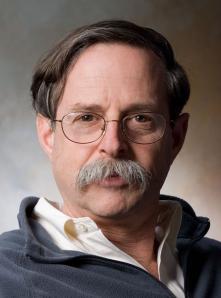
Arthur L. Horwich Physician, geneticist, cellular biochemist
Doctor of Medical Science (Sc.M.D.)
Arthur Horwich received his Bachelor of Arts from Brown in 1972 and continued at Brown in what was then the Program in Medicine. He received his M.D. in 1975 as a member of the University’s first M.D. graduating class of the modern era. After a residency in pediatrics at Yale, Horwich pursued his interests in biological research, first as a postdoctoral researcher at the Salk Institute for Biological Studies in La Jolla, Calif., and then on a postdoctoral fellowship at the Yale University School of Medicine.
In 1984, as an assistant professor of genetics, Horwich established his own laboratory at Yale. In 1987, he and his colleagues were studying proteins in yeast and discovered a protein that helps other proteins become properly folded in the mitochondria without becoming tangled or clumped together with other proteins. These proteins that mediate folding are called chaperonins. The mitochondria chaperone machine captures nonfolded proteins and provides a space for proper folding of the proteins into their active forms. A chaperonin-mediated folding reaction can be reconstituted in a test tube, which allows structural and functional studies that have begun to explain how chaperonins work. A number of diseases — Alzheimer’s, Parkinson’s, mad cow disease, and ALS — are associated with protein aggregation and misfolding. Horwich’s group is currently seeking to understand the role chaperones play in those errant processes.
Horwich has been honored for his work, including election to the National Academy of Sciences in 2013, the 2004 Gairdner International Award for his chaperone discoveries, the 2007 Wiley Prize in Biomedical Science (jointly with Franz-Ulrich Hartl of the Max Planck Institute of Biochemistry), Albert Lasker Award for Basic Medical Research (also with Hartl), and others.
Horwich is the Eugene Higgins Professor of Genetics and Pediatrics at Yale School of Medicine and has been a Howard Hughes Medical Institute investigator since 1990.

Mary Lou Jepsen Electrical engineer, innovator
Doctor of Science (Sc.D.)
Mary Lou Jepsen is among the world’s most productive innovators of graphic displays for computer-generated images and information. She is a 1987 graduate of Brown, with a double concentration in electrical engineering and studio art (Sc.B., 1987), and returned to Brown to earn a Ph.D. in optical sciences in 1997. She is the founder or co-founder of four start-ups in computer display hardware with more than $1 billion in total revenue.
Jepsen is the co-founder of One Laptop Per Child (OLPC), a nonprofit effort to bring computing and transformative educational opportunities to children around the world, particularly in developing countries. She was the chief architect of the $100 laptop, inventing its breakthrough screen technology and co-inventing its low-power management system. As the first chief technology officer for OLPC, she negotiated production of the $100 laptop with large manufacturers and helped design large-volume mass production. After 10 years, OLPC has shipped more than 5 million units, and the laptop is still in production.
As founder and CEO of Pixel Qi, Jepsen invented new screen architectures for mass production in Asia and led creation of new displays with sunlight readability and color video with dramatically reduced power requirements. As co-founder and first CTO of MicroDisplay Corp, she was involved in rear-production HDTV and the first commercial liquid crystal on silicon (LCOS) displays to ship in volume. Her resume lists projects ranging from radio rooms in the Trident submarine to antiglare illumination systems for the Space Shuttle, to large-scale holography (city-block size, in Cologne, Germany), and to a project, shown to be feasible, for projecting video onto the surface of the Moon “for all humanity to see.”
Jepson has authored more than 100 scientific papers and has more than 50 worldwide patents. She has been ranked among the top 50 female computer scientists of all time, and Time Magazine has included her in its “Time 100” list as one of the 100 most influential people in the world. She is currently head of the Display Division at Google [x].
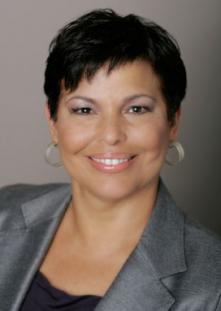
Debra L. Lee Entertainment industry executive
Doctor of Humane Letters (L.H.D.)
Debra Lee, chairman and CEO of BET Networks, graduated from Brown in 1976 with a Bachelor of Arts in political science, specializing in Asian politics. She continued her studies at Harvard, earning a master’s degree in public policy at the John F. Kennedy School of Government and a J.D. from the Harvard Law School.
After serving as a law clerk at the U.S. District Court in Washington, D.C., and five years as an attorney with Steptoe & Johnson, a corporate law firm, Lee joined BET Networks as vice president and general counsel in 1986. During an executive career of nearly 30 years, including almost 10 years as president and chief operating officer, Lee has overseen BET Networks’ growth into one of the world’s most influential multiplatform media companies and the leading provider of entertainment for the African-American audience and global consumers of black culture.
Centric, a 24-hour entertainment network launched by Lee in 2009, delivers music, movies, series, and reality programming to a sophisticated and multicultural adult audience. Lee also oversees a growing international distribution of BET Networks’ programming in Canada, the Caribbean, the United Kingdom, the Middle East, and sub-Saharan Africa.
Lee has been active in University affairs, serving two terms on the Corporation’s Board of Trustees (1994-01 as an alumni trustee, and 2006-12 as a term trustee). Following publication of the University’s Slavery and Justice report, Lee provided support for the Debra L. Lee Lecture on Slavery and Justice, a key component of the University’s response to the report. The Lee Lecture brings to the University campus the most distinguished scholars of historic and contemporary issues related to the legacy of slavery in the Americas and elsewhere.
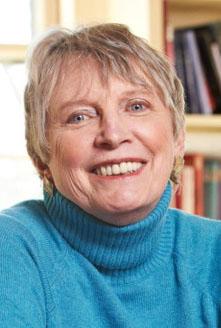
Lois Lowry Children’s author
Doctor of Letters (Litt.D.)
Lois Lowry entered Brown in 1954 as a member of the Class of 1958. She continued for two years until her marriage to Donald Grey Lowry, a naval officer. As a military family, the Lowrys moved frequently — Lowry herself had grown up in a military family, moved internationally, and attended junior high school in Japan — ultimately settling in Portland, Maine.
The author of more than 40 books for children and teens, Lowry has twice been the recipient of the Newberry Medal, given annually for the most distinguished contribution to children’s literature by an American author (1990 for Number the Stars and 1994 for The Giver). She is best known for The Giver (1993), a haunting story of a dystopian society that has traded emotional complexity — the highs and lows of happiness and sorrow — for sameness and safety. The book follows 12-year-old Jonas into training as the Keeper, the person designated to receive and retain the memories of the community. As he learns about emotional depth and the risks that can attend it, Jonas is forced to choose between safe monotony and the risks of knowledge.
The book became a standard work in many schools but was also prohibited in some. Responding to young readers in the Scholastic Reading Club, who had asked her about censorship, Lowry said, “I was astonished to hear it for the first time. ... I think The Giver is such a moral book, so filled with important truths, that I couldn’t believe anyone would want to suppress it, to keep it from kids. ... I don’t for one second think about the possibility of censorship when I am writing a new book. I know I am a person who cares about kids and who cares about truth and I am guided by my own instincts, and trust them.
Lowry’s work has included humorous books as well, including nine books in her Anastasia series. She uses them, she has said, to make herself laugh and to lighten up between serious books, but her readers recognize and respond to serious topics in humor as well.
“I am a grandmother now,” Lowry once blogged. “For my own grandchildren — and for all those of their generation — I try, through writing, to convey my passionate awareness that we live intertwined on this planet and that our future depends upon our caring more, and doing more, for one another.”
“Train Rides,” Lowry’s account of her pathway to Brown as a member of the Class of 1958, is included in The Brown Reader, a 250th anniversary collection of writings about life at Brown by 50 authors who are Brown alumni.
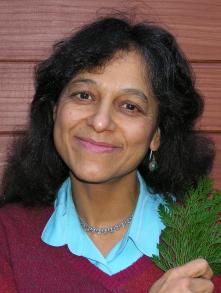
Nalini Moreshwar Nadkarni Forest ecologist
Doctor of Science (Sc.D.)
Forest ecologist Nalini Nadkarni is passionate about the communication of science and about public engagement by scientists themselves. She earned her Bachelor of Science degree at Brown in 1971 and continued her studies at the University of Washington, where she earned her Ph.D. in 1983.
Nadkarni’s research — in Washington state and in Costa Rica — focuses on the ecology of tropical and temperate forest canopies, particularly the role of canopy-dwelling plants. Among her research questions was the apparent contradiction of lush tropical rain forests and nutrient-poor rain forest soil. Inventories she took in the 1980s showed that orchids, ferns and other plants living up in the branches of trees trapped organic material and provided a rich mat of nutrients in the canopy, which trees could reach through aerial roots. Her work has been supported by the National Science Foundation and the National Geographic Society, which has produced films and videos, including the 2001 Emmy Award-winning Heroes of the High Frontier.
She has also been an outspoken advocate for the communication of science, particularly by scientists themselves. Through her own TED talks and interviews in a variety of consumer magazines, she has advanced public understanding of forest ecology. Efforts like the Research Ambassador Program, which she established, train scientists to engage the public, particularly public audiences that are environmentally unaware, wherever the public can be found — churches, schools, sports stadiums, art galleries, rap music slams — and develop professional incentives for communication.The Sustainability in Prisons Project, which she co-founded in 2005, brings science, scientists, and discoveries about the natural world to incarcerated men and women.
A longtime member of the faculty at The Evergreen State College in Olympia, Wash., Nadkarni now holds an emerita position there. She is currently a professor in the Department of Biology and director of the Center for Science and Mathematics Education at the University of Utah.
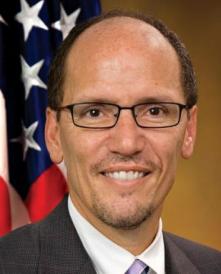
Thomas E. Perez Civil rights attorney and U.S. secretary of labor
Doctor of Laws (LL.D.)
An international relations and political science concentrator at Brown (A.B., 1983), Perez earned a law degree at Harvard and embarked on a career of public service, first as a law clerk in the U.S. District Court (Colorado) and then 12 years in federal service, most of it in the Department of Justice. As a federal prosecutor, he conducted or supervised prosecutions involving civil rights and the rights of employees.
Perez served as deputy assistant attorney general for civil rights under Janet Reno, was Sen. Edward Kennedy’s leading adviser on civil rights, justice, and constitutional issues, and directed the Office for Civil Rights within the Department of Health and Human Services during the last two years of the Clinton Administration. After service in labor, justice and education in Maryland, Perez returned to federal service, nominated by President Obama in March 2009 as assistant attorney general for the Civil Rights Division of the U.S. Department of Justice. Obama nominated him for secretary of labor in March 2013, and Perez was confirmed in July.
Perez returned to the Brown campus on Saturday, March 8, 2014, to deliver one of two keynote presentations for the University’s 250th anniversary Opening Celebration. In a public discussion with Richard Locke of the Watson Institute, Perez described his work at the Department of Labor, where he oversees 17,000 employees and 20 agencies, and his path from Brown to Washington. “So much of my career has been about expanding opportunity,” Perez said. “What I learned [at Brown] gave me the moral, ethical, and intellectual foundation for much of what I did.”

